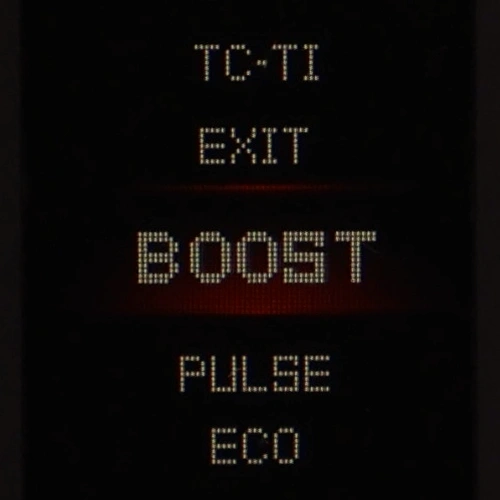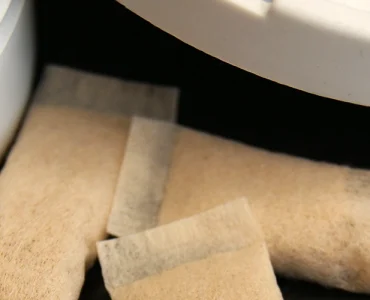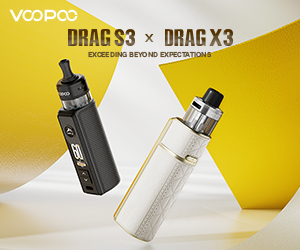Almost every vape, including some of the more advanced pod vapes and disposables, now features a number of different modes. Some might offer one or two, while more advanced devices could give you access to five or more.
All of these modes are designed to allow the user to alter their vaping experience in some way. But while modes such as Eco and Boost are fairly self-explanatory, it is worth taking a moment to better understand both the simple and more advanced modes if you want to get the most from your device.
While the list below isn’t exhaustive, it should help you to get to grips with the most common vape modes, and better understand when, where, and why each is best used.
Variable Wattage Mode
Variable Wattage is the ability to manually adjust the wattage of your vape device, either to suit the e-liquid and coil being used, or to suit your personal vaping preferences.
Most pre-built replaceable coils will have the recommended wattage range printed on them (or on the packaging), as do pods with fixed coils. If not, there are general rules of thumb you can follow when manually setting the wattage of your vape: low-resistance coils need higher wattage, high-resistance coils need lower wattage.
Aside from disposables, almost all modern vapes, from low-power pod vapes to full tank mods, offer variable wattage in some form. They will either allow you to change the power manually or feature some of the modes listed below.
Smart Mode

Smart Mode provides variable wattage without any guesswork or constant fiddling with settings. If your vape doesn’t feature true variable wattage control, it will almost certainly feature Smart Mode. This mode comes in two forms — selectable or always on — but both do the same thing: automatically set the device’s wattage based on the coil or pod inserted.
This obviously takes some of the hassle, experimentation, and guesswork out of choosing a safe coil wattage, but it also limits adjustability.
The wattage Smart Mode chooses is usually not fixed, with most devices allowing some adjustment within the safe range for the coil (e.g., 10W lower or higher than whatever the mode sets the wattage to). However, it is worth remembering that, in some cases, removing and replacing the pod/coil will reset the power to the pre-adjustment level.
Eco Mode
Unlike most of the other modes found on modern vapes, Eco Mode doesn’t seem to have a fixed set of variables, and so exactly how it works depends on the device you are using. What is true for all devices that feature this mode is that it is designed to reduce battery usage and increase how long a vape can be used between charges.
This might be achieved by reducing the wattage, lowering the maximum coil temperature, dimming or disabling the digital display (including themes and animations), or tweaking internal settings like firing speed. It will also, by necessity, disable any other modes that conflict with these changes.
Eco Mode likely isn’t something you will use on a long-term basis, but if you are nowhere near an electrical socket, without a charging cable, or otherwise don’t have the immediate ability to boost the battery, it is an easy way to eke a bit more life out of your vape.
Pulse Mode
Until fairly recently, you would have only encountered Pulse Mode if you used VAPORESSO devices. They were the first brand to introduce it to their devices, and it remains something that few others have added (that is likely to change if VAPORESSO devices with this mode continue to be popular).
Unlike many of the other modes listed here, using pulse Mode doesn’t negate the benefits of the Variable Wattage or Smart Modes, so you don’t need to choose one over the other.
Pulse Mode aims to provide a more consistent vape, fewer power drops, and better flavor intensity. It does this by pulsing the power delivery every 0.2 seconds, which helps to maintain a stable coil temperature. Added benefits of using Pulse Mode include longer overall coil/pod lifespan and, potentially, less battery power drain.
Boost Mode

Boost Mode is another one found mainly on VAPORESSO devices, although you will encounter similar modes with names like “Power Mode” or “Hard Mode” on devices from other brands.
These modes are designed to provide a more intense hit from the devices they appear on. They achieve this by ramping up the power to the coil at the beginning of the draw, more rapidly heating the e-liquid to provide a short but immediate boost in flavor and vapor.
Temperature Control Mode
Temperature Control (TC) Mode is more commonly found on high-end vapes or those aimed at more experienced users (think pod mod, tank mods, etc), and as such, can be a little intimidating to new vapers.
But while there is certainly more room to make mistakes when using TC Mode, it isn’t overly complicated to use. In essence, TC Mode allows the user to manually adjust the maximum temperature the coil is heated to, and therefore really fine-tune their vape experience. This not only lets you control how warm or cool each draw is, but can also bring forward different flavor notes in your e-liquids.
There’s a bit more to it than just ramping up or lowering the temperature, but there’s not enough room to cover this mode here. Luckily, we have a detailed explainer on TC Mode if you want to really understand what it is all about.
TCR Mode
Any mod that offers TC Mode will also likely offer TCR (Temperature Coefficient of Resistance) Mode. When using TC Mode, your vape doesn’t directly measure the coil’s temperature, but rather the change in resistance as it heats up. Different coil materials react to heat in different ways. For example, Kanthal barely changes resistance, while nickel or stainless steel changes a lot more.
The TCR allows you to fine-tune how your mod reacts to those resistance changes. Most mods that include TCR mode have preset values for the most common coil materials, but if your coil is made from a different alloy or is a custom build, adjusting the TCR helps your device read the coil’s temperature more accurately.
Most vapers won’t need to use TCR mode, but it’s a handy option if you want more control, especially for rebuildable coils or uncommon materials.
Variable Power Curve Mode
VPC or Variable Power Curve Mode is probably the one the average vaper is least likely to encounter. This fairly advanced mode allows you to set as many as five different wattage levels for your mod to reach each time you draw on it. This ability to prescribe a power curve, from low to high or from high to low, allows you very fine-grained control of your vaping experience.
Inexperienced vapers or those new to the type of mods that commonly have VPC mode should treat this mode with some care. But with some careful experimentation, VPC can be safe and useful for almost any vaper.
Bypass Mode
While Bypass Mode can be considered advanced, it is one of the easiest advanced modes you’ll ever likely come across in a vape. Simply put, Bypass Mode takes away almost all of the digital controls of your device (wattage range, Smart Mode, and any other standard mode or setting) to make it work more like a mechanical mod.
The only thing that controls the vapor output is the resistance level of the coil and the amount of power in the battery. The more power that’s available, the more power that is output through the coil.
If that sounds a bit scary and unsafe, it’s worth noting that it doesn’t bypass the various safety features built into every genuine modern vape. In fact, because it is still limited by the mod software in some ways, there is an argument to be had about whether there is much difference between Bypass Mode and Boost Mode.
The Bottom Line
Most vapes can be used perfectly well without needing you to ever choose a mode, and if that works for you, great! But if you want to discover every bit of adjustability your latest device offers, getting to grips with its modes is key. You never know, with just an hour or so of experimentation, you might unlock a vaping experience you never knew you wanted or needed.










Add comment